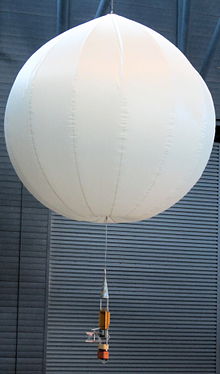Vega 2
The name VeGa (ВеГа) combines the first two letters of the Russian words for Venus (Венера: "Venera") and Halley (Галлея: "Galleya").
Instruments included an antenna dish, cameras, spectrometer, infrared sounder, magnetometers (MISCHA) and plasma probes.
The 4,840 kilograms (10,670 lb) craft was launched on top of a Proton-K from Baikonur Cosmodrome, Tyuratam, Kazakh SSR.
The module, a 1,500 kilograms (3,300 lb), 240 centimetres (7.9 ft) diameter sphere, contained a surface lander and a balloon explorer.
The flyby probe performed a gravitational assist maneuver using Venus, and continued its mission to intercept the comet.
Several of these scientific tools (the UV spectrometer, the mass spectrograph, and the devices to measure pressure and temperature) were developed in collaboration with French scientists.
The mean stable height was 53.6 kilometres (33.3 mi), with a pressure of 535 millibars (535 hPa) and a temperature of 308–316 K (35–43 °C; 95–109 °F) in the middle, most active layer of the Venus three-tiered cloud system.
The balloon drifted westward in the zonal wind flow with an average speed of about 66 metres per second (220 ft/s) at nearly constant latitude.
The probe continued to operate in the daytime until the final transmission was received at 00:38 UT on 17 June from 7.5 S, 76.3 E after a total traverse distance of 11,100 kilometres (6,900 mi).
